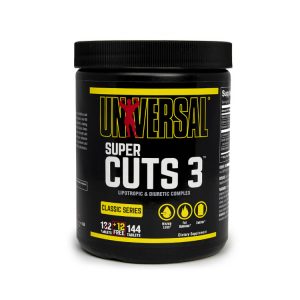Mobility for Gains & Longevity
Amateur bodybuilders often overlook the importance of mobility training. Not only does mobility training provide increased flexibility, it can also help you add size and longevity to both your physique and your career. Unfortunately, I’ve heard many people say they do not have the time to add mobility work to their training, or they are simply not motivated to do the work. Let me tell you why skipping mobility work is a huge mistake for the dedicated bodybuilder.
Avoiding Injury
The lack of mobility in a joint can hinder the body’s ability to properly function during a specific exercise or series of movements like in an Olympic lift. If function is compromised due to poor flexibility within a joint, the body will not be able to work at full capacity. This could ultimately lead to acute injury or overuse injury over time. This lack of flexibility will also hinder your potential: if you neglect functionality, your muscle growth will be impeded. Let’s take a look at sports. Performance typically correlates to the athlete’s mobility. In terms of speed and power, a deficiency in mobility will greatly decrease the athlete’s performance, whether that’s in the gym, on the track, or out on the field. This is why so many professional and Olympic athletes dedicate a significant amount of time to mobility work. In addition to mobility training, athletes are known to enlist the help of massage therapists, physical therapists, and kinesiologists. They make this investment because they understand that lack of flexibility means lack of muscle function. Athletes also know that lack of muscle function leads to compromised joints, which leads to injury. We’ve all heard or seen the horror stories – rotator cuff tears, torn pecs, ruptured cartilage. These types of injuries are catastrophic to your end goal and they can devastate your strength and size gains, or potentially end your career. But the good news is that many of these injuries can be avoided. Powerlifters figured this out a long time ago and, to their credit, some bodybuilders have started to catch on. So how can we implement mobility work into our training program?
Implementing Functional Flexibility
I’m not saying you need to sign up for a steamy yoga class or get started in gymnastics. All we’re looking to do is develop and maintain a functional level of flexibility for our sport. Functional flexibility is the ability of the skeletal joints to move easily and freely within a functional movement. Think of “function” as an intentional movement. That is, what are we intending to do for a particular sport or activity? If you’re anything like me, you know how annoying it is to not be flexible enough to perform a certain movement. You might never need to do a full split, but you do need to maintain enough flexibility to perform a proper squat to maximize power output. The biggest culprits for bodybuilders? Shoulder and hips. To guarantee maximum performance, we must take care of these two areas. Hip tightness can lead to lower back and knee issues. So, what do we do? Although I am not an expert in mobility and I am not a certified strength coach, I’ve been doing this long enough to explain the basics and understand the importance. This knowledge should be taken and applied on an individual basis-preferably by a professional to guarantee safety and efficacy.
Stretching – Before and After
There are several types stretching, but we are going to address the most common: static and dynamic stretching. Most people are familiar with static stretching. This is where you hold a stretch under tension for a duration of time like we were all taught in gym class in high school. This type of stretching should be done after a workout and not before. You should hold the stretch for a duration of time ranging from 20-30 seconds. Do this after your workouts in sets of two or three. Dynamic stretching is different. It requires you to move a joint through its full range of motion under little or no resistance. You perform these before lifting or an event. For example, try actively swinging your leg like a pendulum from front to back. Bring it up as high and as far back as you can. This will create both contraction and stretching under mild tension in both hip flexors and hamstrings. This also acts a warm up and decreases resistance from opposing muscles. Dynamic stretching is extremely effective at reducing the risk of injury. To increase the difficulty, you can try incorporating resistant bands with this type of stretching.
Tissue Work
Other tools that are commonly used to help maintain properly functioning muscles are foam rollers, lacrosse balls, softballs, and deep tissue massages. These are tools used to initiate self-myofascial release within the muscle. To do this properly, you need to apply a great deal of pressure over trigger points in the muscle to help regain normal function. This pressure helps relax the muscles and break apart adhesions, which in turn increases blood flow to that muscle. This enables faster recovery for sore muscle tissue. Recent research supports the efficacy of self-myofascial release. By incorporating simple foam rolling to your routine, you can decrease muscle soreness post-exercise and increase the contractile force of your muscles.
Summary
To prevent injury and maximize gains and longevity, you must incorporate some type of mobility work in your training. Don’t overlook it. There’s a reason why there always seems to be more injured bodybuilders than powerlifters. Bodybuilders are often restricted on what they can or cannot do because of acute and chronic injury. Exercises are tools used by bodybuilders to stimulate growth. Don’t limit your tools by neglecting mobility. You’re just shortchanging your potential. Do what works for you as an individual. Implement a mobility program so you don’t fall victim to a catastrophic injury. It’s true that you can never prevent all injuries from happening, but what we can do is reduce their likelihood by making sure our skeletal muscle is functioning at full capacity. Train in order to train another day. No one wants to be that guy in the gym who goes around telling everyone how strong he used to be before they were permanently injured.

